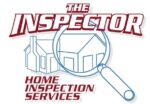Fireplace/ Chimney Safety
Just like your family we love to cuddle up next to the fire on a chilly day. But there are a few things you should know before lighting up this season.
Which one do you have?
Gas Fireplace is a fireplace that burns either natural gas or propane to create flames and heat.
There are three main types of gas Fireplaces: ‘gas fireplace inserts’ that are installed in the opening of an existing wood burning fireplace and are vented through the existing chimney with a special vent pipe that carries the exhaust to the outside; ‘direct vent gas fireplaces’ which can be vented directly through an exterior wall and do not require a traditional masonry chimney; and ‘vent-free gas fireplaces’ that are designed to operate without the venting of exhaust fumes to the outside.
A pilot light operates continually to ensure piped in gas burns whenever it is present.
Wood Burning Stove/ Inserts:
The two general approaches to meeting the EPA smoke emission limits are non-catalytic and catalytic combustion. Both approaches have proved effective, but there are performance differences. Although most of the stoves on the market are non-catalytic, some of the more popular high-end stoves use catalytic combustion. https://www.epa.gov/burnwise
In California’s Central Valley there are guidelines as to when you can use you’re your fireplaces: Check Before You Burn. http://www.valleyair.org/aqinfo/cbyb.htm
Chimney Safety Overview
An annual chimney inspection performed by a qualified professional can help prevent carbon monoxide intrusion and chimney fires. These inspections can also identify potential system issues to address them before they become costly.
Many agencies and organizations now recognize the importance of annual heating system inspection and maintenance in keeping “the silent killer” at bay.
A well-tuned furnace or boiler will operate efficiently and produce a warm and comfortable home. An overlooked heating system can produce death and heartbreak.
Considering the risks involved when heating systems are neglected – and the benefits of having them properly maintained –
Quoted from our Home Inspectors: Mark Harman & Spencer Harman “We recommend your chimneys/ fireplaces checked annually by a CSIA Certified Chimney Sweep and swept or repaired as needed.“
Family Fire Safety!
Time to check your smoke detectors and Carbon Monoxide Detectors: Replace/ clean/ replace batteries
Plan Ahead! If a fire breaks out in your home, you may have only a few minutes to get out safely once the smoke alarm sounds. Everyone needs to know what to do and where to go if there is a fire.
Your ability to get out of your home during a fire depends on advance warning from smoke alarms and advance planning.
Get your Free (click) Family Safety Guidelines and a Fire Escape Plan.
Trivia: Did you know that we have inspected over 7500 homes in California’s Central Valley!!!
If you have questions or need further suggestions please give our office a call.
Mark Harman & Spencer Harman
Your California Central Valley Home Inspectors
Compliments of the National Fire Protection Association
Reproduced from NFPA’s website, www.nfpa.org/publiceducation. © NFPA.
Download as PDF or JPG to share with your clients

